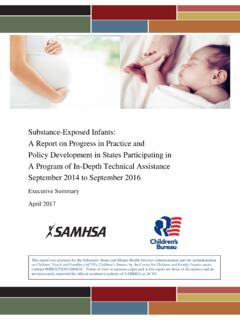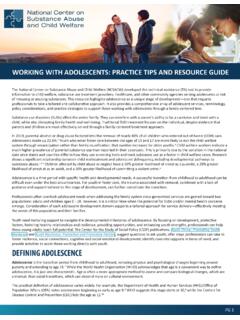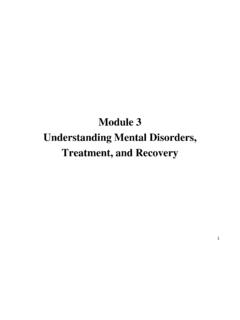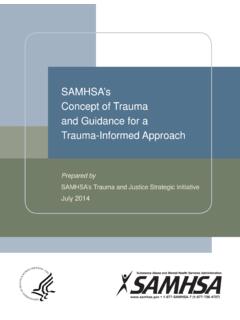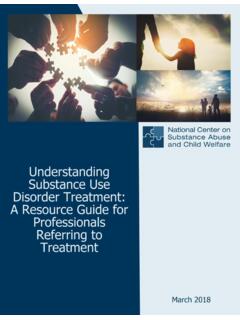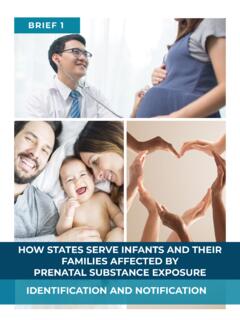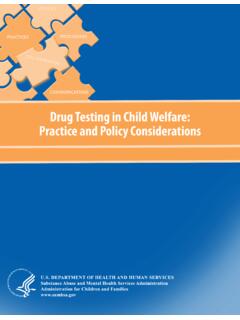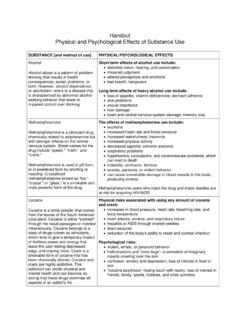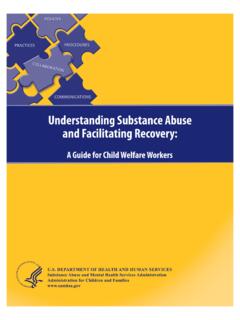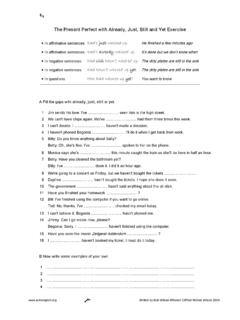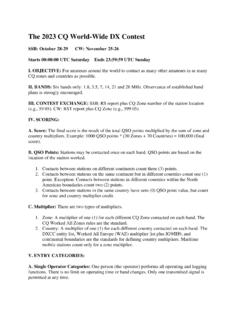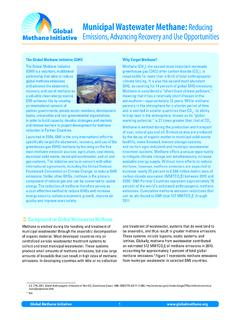Transcription of Screening and Assessment for Family Engagement, Retention ...
1 Screening AND Assessment FOR Family ENGAGEMENT, Retention , AND RECOVERY (SAFERR) Screening AND Assessment FOR Family ENGAGEMENT, Retention , AND RECOVERY (SAFERR)Nancy K. YoungMary NakashianShaila YehSharon Amatetti AcknowledgmentsNumerous people contributed to the development of this volume (see Appendix J, List of Contributors and Reviewers ). This document was prepared by the National Center on Substance Abuse and Child Welfare (NCSACW) for the Substance Abuse and Mental Health Services Administration (SAMHSA) and the Administration for Children and Families (ACF), both within the Department of Health and Human Services (DHHS), under Contract No.
2 270-027108. Nancy K. Young, , served as Project Director, Mary Nakashian, , authored and edited the final draft, and Shaila Yeh, , created the first draft. Sharon Amatetti, , served as the Government Project Officer from SAMHSA s Center for Substance Abuse Treatment (CSAT) and drafted sections of the report; Irene Bocella, , and Catherine Nolan, , served as the Project Officers from views, opinions, and content of this publication are those of the authors and contributors and do not necessarily reflect the views, opinions, or policies of SAMHSA, ACF, or DHHS. Resources listed in this document are not all inclusive; inclusion as a resource does not constitute an endorsement by SAMHSA, ACF, or Domain NoticeAll material appearing in this document is in the public domain and may be reproduced or copied without permission from SAMHSA, ACF, or DHHS.
3 Citation of the source is appreciated. However, this publication may not be reproduced or distributed for a fee without the specific, written authorization of the Office of Communications, SAMHSA, Access and Copies of PublicationThis publication can be accessed electronically through the following Internet World Wide Web connection For additional free copies of this document, please call SAMHSA s National Clearinghouse for Alcohol and Drug Information at 1-800-729-6686 or the National Clearinghouse on Child Abuse and Neglect at CitationYoung, N. K., Nakashian, M., Yeh, S.
4 , & Amatetti, S. Screening and Assessment for Family Engagement, Retention , and Recovery (SAFERR). DHHS Pub. No. 0000. Rockville, MD: Substance Abuse and Mental Health Services Administration, OfficeOffice of Program Analysis and Coordination, Center for Substance Abuse Treatment, Substance Abuse and Mental Health Services Administration, 1 Choke Cherry Road, Rockville, MD 20857 Publication No. (SMA) 06-0000 Printed 2006iTable of ContentsIntroduction ..1 Section I. Building Cross-System Collaboration .. Developing a Collaborative Team .. Establishing the Steering Committee s Charge and Approach.
5 13 Section II. Collaborative Roles and Responsibilities .. Responsibilities of the Child Welfare Service System .. Responsibilities of the Alcohol and Drug Service System .. Responsibilities of the Court System .. Collaborative Responsibilities of the Child Welfare, Court, and Alcohol and Drug Service Systems .. Models for Cross-System Collaboration ..36 Section III. Collaborative Practice at the Frontline .. Developing Communication Structures and Protocols .. Screening Assessment .. Treatment and Family Case Did the Interventions Work?64 AppendixesAppendix A.
6 Facilitators GuideA-1 Appendix B. Fact Sheets ..B-1 ..Appendix C. Understanding the Needs of Children in Families Involved in the Child Welfare System Who Are Affected by Substance Use Disorders ..C-1 Appendix D. Examples of Screening and Assessment Tools for Substance Use Disorders ..D-1 Appendix E. Substance Use, Abuse, Dependence Continuum, and Principles of Effective Treatment ..E-1 Appendix F. Examples of Safety and Risk Assessments for Use by Child Welfare Staff ..F-1 Appendix G. Sharing Confidential Information ..G-1 Appendix H. Glossary of Terms.
7 H-1 Appendix I. A Guide to Compliance With the Indian Child Welfare Act ..I-1 Appendix J. Acknowledgment of Contributors and ReviewersJ-11 INTRODUCTIONThis guidebook presents the SAFERR ( Screening and Assessment for Family Engagement, Retention , and Recovery) model for helping staff of public and private agencies respond to families affected by substance use disorders. The SAFERR model and this guidebook were developed by the National Center on Substance Abuse and Child Welfare (NCSACW), a training and technical assistance resource center established jointly by the Center for Substance Abuse Treatment of the Substance Abuse and Mental Health Services Administration and the Office on Child Abuse and Neglect of the Administration for Children and Families.
8 Both agencies are part of the Department of Health and Human Services. NCSACW developed SAFERR in response to frequent requests fromagencies for a tool that caseworkers could use to screen parents for in order to make decisions about children s safety. This guidebook isresearch findings and practical experience have established that no siof information caseworkers need to make difficult decisions about whhave identified an array of Screening instruments and practice princip managers of child welfare potential substance use disorders that tool, and more. Although ngle checklist yields the kind ether children are safe, they les that, if used appropriately, can provide timely information to guide those decisions.
9 Moreover, if these instruments and practice principles are used collaboratively by child welfare and substance abuse treatment staff, they not only inform urgent decisions about child safety, but they also improve the way staff engage and retain families in services over time and they point to policy changes that make it easier for families and workers alike to succeed (Day, Robison, & Sheikh, 1998). SAFERR is based on the premise that when parents misuse substances and maltreat their children, the only way to make sound decisions is to draw from the talents and resources of at least three systems.
10 Child welfare, alcohol and drugs, and the there are a variety of tools for Screening and assessing children and families and a range of substance abuse treatment and other services, it is only through collaboration and communication across the systems responsible for helping families that workers will get the information they need and that families will feel they have a chance at changing their lives. Recent policy changes give new urgency to improving staff capacity to screen, assess, engage, and retain families. These include The timelines in the Federal Adoption and Safe Families Act (ASFA) that speed up the clock when children have been removed from parental custody.
